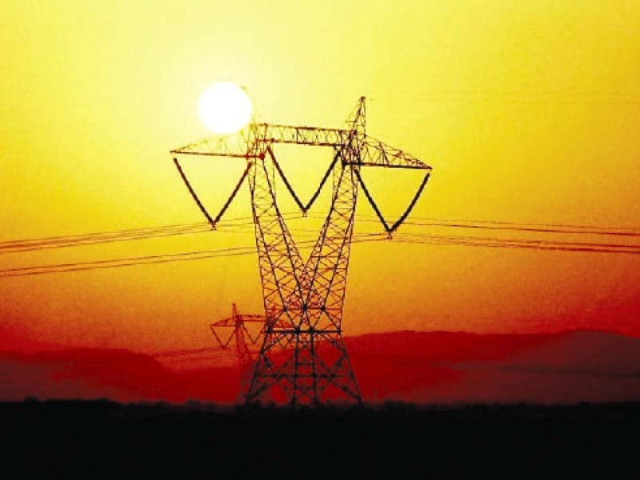Miseries of energy consumers continue to mount
Electricity, gas and oil prices go through the roof, forcing consumers to cough up billions

The year 2023 brought unprecedented pain to consumers as energy prices went sky high with no imminent relief in sight.
The government jacked up prices of electricity, oil and gas to historic highs, fuelling a wave of inflation that sent prices of goods, particularly food items, soaring.
To add to the woes, the outgoing year saw no major investment in the energy sector. Though the government made big promises, no investment plan could materialise.
The current caretaker government took over reins of the country in August 2023 following the completion of tenure of the Pakistan Democratic Movement (PDM) government.

Design: Ibrahim Yahya
Despite assurances of relief to the people, the PDM tenure proved to be the worst when energy prices were pushed to all-time highs. During 2023, energy consumers were burdened with an additional Rs1.52 trillion on account of surge in prices of oil, gas and electricity.
The government increased gas tariff by 251% in one year that left a cumulative impact of Rs711 billion on consumers. Of the total, prices were first raised up to 112% on January 1, 2023. Due to that increase, the consumers had to bear an additional burden of Rs310 billion.
On November 1, 2023, prices were again jacked up, this time up to 139%, putting an extra burden of Rs401 billion on consumers. The government made gas supply highly expensive in a bid to bridge the revenue shortfall of public gas utilities.
Similarly, the basic electricity tariff went up by Rs7.50 per unit during 2023, forcing consumers to bear an extra cost of Rs477 billion. With the price hike, average electricity tariff reached Rs29.78 per unit and after including taxes and surcharges, the tariff soared up to Rs50 per unit.
Electricity consumers were compelled to pay an additional Rs335 billion on account of a permanent surcharge of Rs3.23 per unit, which was slapped on March 31, 2023.
Additionally, the National Electric Power Regulatory Authority (Nepra) frequently approved upward revisions in tariff throughout the year in the shape of fuel charges adjustment because of variation in fuel costs.
On several occasions, many power plants did not operate at all while honest consumers, who were regularly paying their bills, were made to pay capacity charges.
It was estimated that Rs1.3 trillion would be given in capacity payments to the plants that did not produce electricity during the ongoing financial year. This mismanagement in the power sector added to the miseries of consumers.
Oil prices
During the year under review, petroleum prices surged to record highs, driven by a soaring international crude market and a massive depreciation of Pakistani rupee. It largely contributed to the increase in inflationary pressures in the country.
A continued increase in the rate of petroleum levy, which reached up to Rs60 per litre, also contributed to the higher oil prices.
Over the course of the year, prices of petroleum products were raised up to Rs117 per litre. On January 1, the cost of petrol stood at Rs214.80 per litre but it reached Rs331.80 by September 16, 2023.
Similarly, the price of high-speed diesel had been Rs227.80 per litre at the start of 2023, but by September, it had gone up to Rs329.18.
Among fortnightly reviews, prices of petroleum products were revised upwards nine times during 2023 and were reduced eight times. In the case of eight fortnightly reviews, the prices were left unchanged.
Now, the caretaker government boasts that over the past three months, it has pushed down petrol price by Rs64.04 per litre. Similarly, diesel has become cheaper by Rs52.99 per litre between September 16 and December 16, 2023.
At present, petrol costs consumers Rs267.34 per litre while high-speed diesel is sold for Rs276.21 per litre. A key factor behind the significant decrease in prices is the weakening of global crude markets.
Circular debt
Despite the massive rise in prices of oil, gas and electricity, the energy sector’s circular debt continued to put a strain on government finances. Total circular debt of the energy sector stood at Rs4.5 trillion without interest costs. Of this, Rs2.1 trillion worth of debt plagued the gas sector while the power sector was saddled with a debt pile of Rs2.3 trillion.
Owing to bank borrowing, the cost of circular debt in the power sector came in at Rs400 billion. In addition, a debt of Rs461 billion was created only in FY23 because of diversion of expensive liquefied natural gas (LNG) supplies to domestic consumers.
The caretaker government claims that it has been able to freeze the circular debt following up to 139% rise in gas prices. However, the debt is still mounting due to the provision of imported LNG to residential consumers in winter, when demand goes up sharply.
Among major public sector energy companies, the circular debt continued to haunt oil marketing giant Pakistan State Oil (PSO) in 2023 when its receivables from clients swelled to Rs800 billion as compared to Rs362 billion in August 2021.
A public gas utility owes PSO Rs519 billion for LNG supplies. Power producers were also the major defaulters who had to pay Rs150.8 billion. Of these, Hubco owed Rs29.5 billion whereas Kapco had liabilities of Rs5 billion.
Inflated bills scam
During 2023, a scam of excessive billing worth Rs40 billion on the part of electricity distribution companies (DISCOs) was unearthed.
Nepra exposed the scam through an investigative report, noting that DISCOs were involved in a dubious scheme of power theft, which caused heavy financial losses to millions of consumers through inflated bills.
The report denounced DISCOs for deliberately engaging in dishonest practices to hide their own inefficiencies, resulting in exorbitant electricity bills for thousands of consumers. Their malpractices included issuance of bills with invalid photo evidence of meter reading and extended billing cycles beyond 30 days, which deprived many consumers of the entitled subsidies.
Read more Electricity users to pay Rs28b more
Nepra’s investigation revealed that during July and August 2023, domestic customers were excessively charged. In July, over 5.7 million customers of Multan Electric Power Company (Mepco) received bills for a period longer than 30 days.
Similarly, in August, about 1.2 million customers of Gujranwala Electric Power Company (Gepco) along with substantial number of consumers of Faisalabad Electric Supply Company (Fesco), Lahore Electric Supply Company (Lesco) and Hyderabad Electric Supply Company (Hesco) were overcharged.
Such malpractices pushed customers into higher tariff slabs, altered their status from protected to unprotected consumers and reclassified them from lifeline to non-lifeline categories.
The report pointed out that in July and August 2023, thousands of consumers got bills with invalid meter reading images. Major violators of rules were Mepco, Lesco, Quetta Electric Supply Company (Qesco) and Sukkur Electric Power Company (Sepco).
According to the established tariff terms and conditions, the billing period should not exceed 30 days from the date of last meter reading. However, the investigation uncovered that billing cycles of several DISCOs ranged from slightly over 30 days to even 40 days or more, leading to significant extra billing to consumers.
Load-shedding
During the year 2023, the consumers of gas and electricity got no respite from frequent load-shedding. Even during summer, gas was not available for cooking after 10pm.
In winter, though the government had promised to provide gas three times a day, it was not even available at cooking time. Pakistan’s gas reserves were depleting fast at a pace of 9% per year while no major discoveries were made during 2023 to bridge the supply deficit.
The situation was no better in the case of electricity outages that continued to trouble consumers during the year, particularly in summer.
Pakistan has an installed production capacity of 41,000 megawatts but many power plants do not function most of the time, resulting in load-shedding across the country. It was a blessing in disguise for the plants which received billions of rupees in capacity payments.
During the year, no major investment could be poured into the energy sector. Though the government floated bids for the auction of 10 exploration blocks, only eight were awarded as no new companies participated in bidding.
The year 2023 caused more pain to energy consumers who long waited for some relief. With the recent decline in global oil prices and the rupee’s continuous recovery over the past few weeks, consumer woes may ease in the new year.
Published in The Express Tribune, December 30th, 2023.
Like Business on Facebook, follow @TribuneBiz on Twitter to stay informed and join in the conversation.



















COMMENTS
Comments are moderated and generally will be posted if they are on-topic and not abusive.
For more information, please see our Comments FAQ